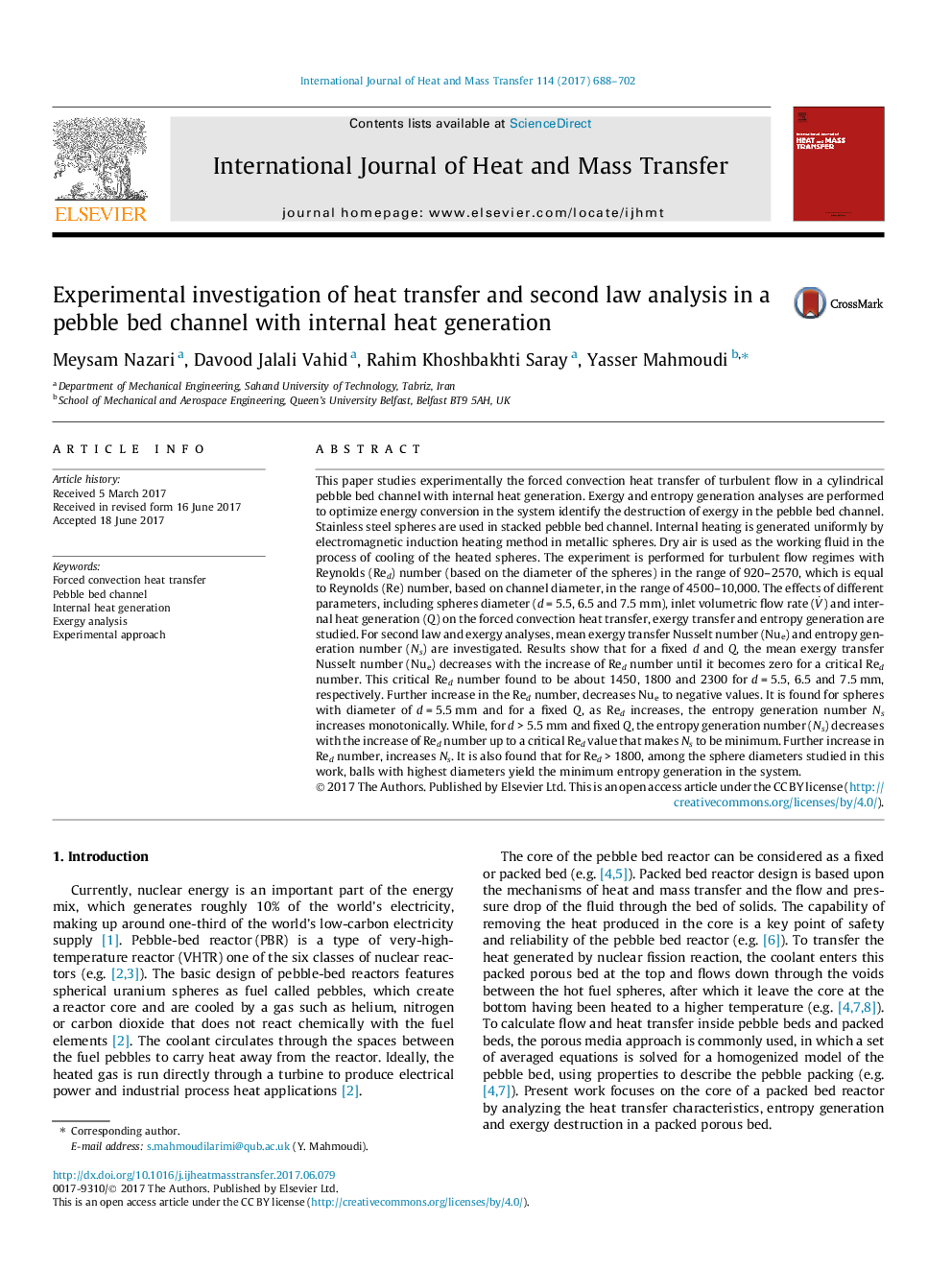| کد مقاله | کد نشریه | سال انتشار | مقاله انگلیسی | نسخه تمام متن |
|---|---|---|---|---|
| 4993902 | 1458027 | 2017 | 15 صفحه PDF | دانلود رایگان |
عنوان انگلیسی مقاله ISI
Experimental investigation of heat transfer and second law analysis in a pebble bed channel with internal heat generation
ترجمه فارسی عنوان
بررسی تجربی انتقال حرارت و تجزیه و تحلیل قانون دوم در یک کانال بستر پابلو با تولید گرما داخلی
دانلود مقاله + سفارش ترجمه
دانلود مقاله ISI انگلیسی
رایگان برای ایرانیان
کلمات کلیدی
انتقال حرارتی اجباری، کانال کابین پببل، تولید گرما داخلی، تجزیه و تحلیل اگزرژی، رویکرد تجربی،
موضوعات مرتبط
مهندسی و علوم پایه
مهندسی شیمی
جریان سیال و فرایندهای انتقال
چکیده انگلیسی
This paper studies experimentally the forced convection heat transfer of turbulent flow in a cylindrical pebble bed channel with internal heat generation. Exergy and entropy generation analyses are performed to optimize energy conversion in the system identify the destruction of exergy in the pebble bed channel. Stainless steel spheres are used in stacked pebble bed channel. Internal heating is generated uniformly by electromagnetic induction heating method in metallic spheres. Dry air is used as the working fluid in the process of cooling of the heated spheres. The experiment is performed for turbulent flow regimes with Reynolds (Red) number (based on the diameter of the spheres) in the range of 920-2570, which is equal to Reynolds (Re) number, based on channel diameter, in the range of 4500-10,000. The effects of different parameters, including spheres diameter (d = 5.5, 6.5 and 7.5 mm), inlet volumetric flow rate (VÌ) and internal heat generation (Q) on the forced convection heat transfer, exergy transfer and entropy generation are studied. For second law and exergy analyses, mean exergy transfer Nusselt number (Nue) and entropy generation number (Ns) are investigated. Results show that for a fixed d and Q, the mean exergy transfer Nusselt number (Nue) decreases with the increase of Red number until it becomes zero for a critical Red number. This critical Red number found to be about 1450, 1800 and 2300 for d = 5.5, 6.5 and 7.5 mm, respectively. Further increase in the Red number, decreases Nue to negative values. It is found for spheres with diameter of d = 5.5 mm and for a fixed Q, as Red increases, the entropy generation number Ns increases monotonically. While, for d > 5.5 mm and fixed Q, the entropy generation number (Ns) decreases with the increase of Red number up to a critical Red value that makes Ns to be minimum. Further increase in Red number, increases Ns. It is also found that for Red > 1800, among the sphere diameters studied in this work, balls with highest diameters yield the minimum entropy generation in the system.
ناشر
Database: Elsevier - ScienceDirect (ساینس دایرکت)
Journal: International Journal of Heat and Mass Transfer - Volume 114, November 2017, Pages 688-702
Journal: International Journal of Heat and Mass Transfer - Volume 114, November 2017, Pages 688-702
نویسندگان
Meysam Nazari, Davood Jalali Vahid, Rahim Khoshbakhti Saray, Yasser Mahmoudi,
